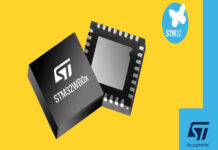Sustainability is not a new concept in the semiconductor industry for more than ten years, numerous businesses have run initiatives to lessen their environmental impact. However, initiatives are becoming more formalised, particularly as environmental, social, and governance (ESG) prioritise sustainability across all business sectors.
The Semiconductor Climate Consortium (SCC), which was recently established, is heavily focused on uniting semiconductor companies to share best practises for reducing carbon emissions. Energy reduction is a significant area where companies can have an impact. However, there are other areas where businesses can work toward sustainability, such as production methods, water usage, material choice, and disposal.
Lam’s net-zero future
Lam Research, a global supplier of wafer fabrication equipment and services, first formalized its sustainability goals in 2015, according to Stacey MacNeil, chief communications officer at Lam Research, who oversees the company’s ESG programs.
“Last year, we decided to push our progress further and set ambitious goals to operate at 100% renewable electricity by 2030 and achieve net-zero by 2050,” MacNeil said. The company has published its roadmap to achieving those goals, which includes initiatives across carbon, energy, waste, water, green chemistry, and air pollution, she added.
Prior to the SCC, there were varying levels of commitment to establish and make progress toward net-zero goals across the industry, and the shaping of the consortium represents significant collaboration between key players, she said.
Achieving a net-zero model
There are many ways semiconductor companies can embrace sustainability, as outlined by a recent report from IDTechEx titled “Sustainable Electronics Manufacturing: 2023-2033”, which assesses sustainable methods of electronics manufacturing and concentrates on innovations within printed circuit boards (PCBs) and integrated circuits (ICs).















